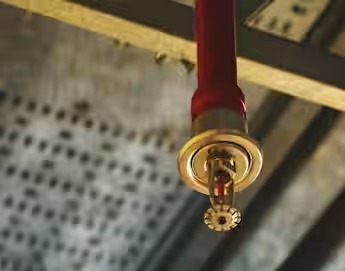Locations
In our blog 'Who does fire safety legislation apply to in England and Wales and what is a Fire Risk Assessment?', our expert Regulatory lawyers Oliver Carlyon and Lee-Anne Beer examined some of the significant changes introduced by section 156 of the Building Safety Act 2022.
The Building Safety Act 2022 was introduced as part of the UK Government's response to the Phase 1 recommendations of the Grenfell Tower Inquiry. It is intended to "secure the safety of people in or about buildings and to improve the standard of buildings" and introduces new legislative requirements and amends the existing Regulatory Reform (Fire Safety) Order 2005 (the Fire Safety Order).
In this blog, Oliver and Lee-Anne consider the other amendments to the Fire Safety Order introduced by section 156 of the Building Safety Act 2022 and what these mean for those who have duties as the 'Responsible Person' under the Fire Safety Order.
The Responsible Person
Our blog 'Who does fire safety legislation apply to in England and Wales and what is a Fire Risk Assessment?' discussed the meaning of 'Responsible Person', as defined by Article 3 of the Fire Safety Order, and the requirement to carry out a 'suitable and sufficient' Fire Risk Assessment.
Since implementation of section 156 of the Building Safety Act in October 2023, other duties under the Fire Safety Order have become more onerous. We discuss these below.
Fire Safety Arrangements
Article 11 of the Fire Safety Order requires the Responsible Person to:
make and give effect to such arrangements as are appropriate, having regard to the size of his undertaking and the nature of its activities, for the effective planning, organisation, control, monitoring and review of the preventive and protective measures.
As a result of amendments introduced by section 156 of the Building Safety Act 2022, the requirements under Article 11 now apply to all Responsible Persons. Previously the requirement applied in specific circumstances, most notably where there were five or more employees.
Provision of information to residents of domestic premises
Section 156 introduces a new Article 21(a) into the Fire Safety Order, which applies to buildings containing two or more sets of domestic premises, and requires the Responsible Person to give residents of domestic premises 'comprehensible and relevant' information about 'the relevant fire safety matters'.
Article 21A(3) defines 'relevant fire safety matters' as:
- the risks to residents of the domestic premises identified by the risk assessment;
- the preventive and protective measures;
- the name of the responsible person and an address in the United Kingdom at which the responsible person, or someone acting on their behalf, will accept notices and other documents;
- the identity of any person appointed by the responsible person to assist them with making or reviewing an assessment under article 9 [Fire Risk Assessments];
- the identity of any persons nominated by the responsible person under article 13(3)(b) [which relates to fire fighting and fire detection];
- any risks of which the responsible person has been informed under article 22(1)(c) [which relates to cooperation and co-ordination between Responsible Persons];
- any other matters specified in regulations made by the relevant authority.
Provision of information to new Responsible Persons
Section 156 of the Building Act 2022 also introduces new requirements under Article 22A of the Fire Safety Order, in circumstances where one person ceases to the be the Responsible Person and another person takes over the duties of the outgoing Responsible person.
The outgoing Responsible Person must give the new Responsible Person any 'relevant fire safety information' held by the outgoing person. Article 22A(3) of the Fire Safety Order defines relevant 'fire safety information', which includes information about Fire Risk Assessments and the identity of persons appointed to make or review Fire Risk Assessments.
Cooperation with Accountable Persons
A new Article 22B applies to Responsible Persons in 'higher risk buildings'.
A 'higher risk building', as defined by section 65 of the Building Safety Act 2022, is a building in England that is at least 18m in height or has at least seven storeys and contains at least two residential units.
Under Article 22B, the Responsible Person of a higher risk building must identify and co-operate with 'Accountable Persons'. 'Accountable Persons' are defined by section 72 of the Building Safety Act 2022, but, broadly, are any person who holds the legal estate in possession in any of the common parts of the building or who is under a repairing obligation in respect of the common parts.
Offences
Section 156 of the Building Safety Act 2022 also amends Article 32 of the Fire Safety Order to increase the level of fines that can be imposed for certain offences, such as the offences of:
- intentionally deceptive impersonation of a fire inspector;
- failure to comply (without reasonable excuse) with specific requirements imposed by a fire inspector (such as by not providing a copy of the Fire Risk Assessment when requested); and
- failure by those on whom duties are imposed by the Fire Safety Order to comply with requirements relating to the installation of luminous tube signs.
The level of fines has been increased from £1,000 to being unlimited. The new level of fines does not apply to offences which occurred before 1 October 2023.
Our comments
Since changes introduced by the Building Safety Act 2022, the Fire Safety Order now has broader scope and places duties on Responsible Persons to give residents information about fire safety in buildings and to cooperate with others responsible for fire safety. The purpose of these measures is to secure the safety of persons in buildings, and those responsible for fire safety should ensure that they take active steps to ensure compliance.
Our Regulatory team are here to help both organisations and individuals navigate their fire safety duties. If you would like to discuss any of the issues raised in this blog, please contact Oliver Carlyon.


